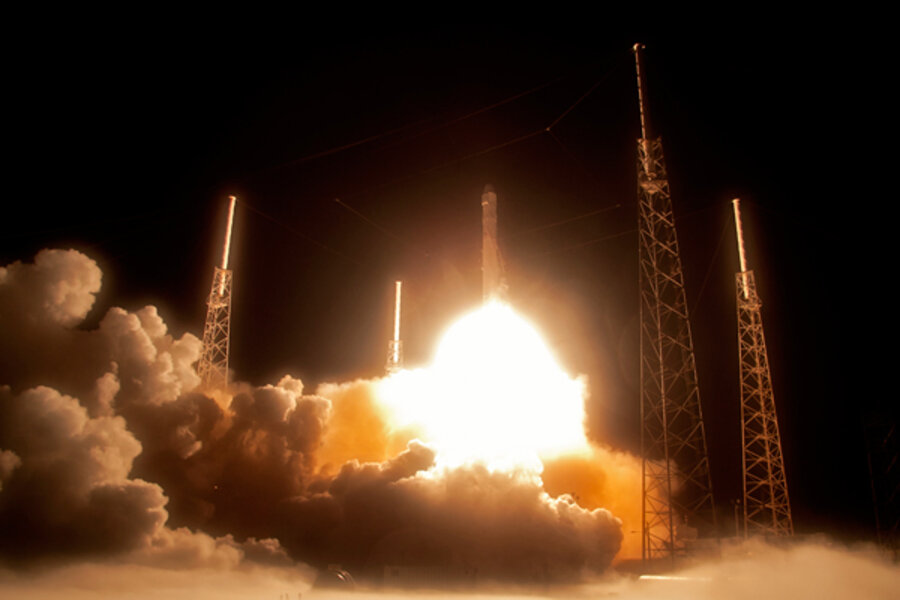SpaceX launch, a strong start for commercial spaceflight
Ever since the retirement of the Space Shuttle fleet last year, the United States has had no way to send astronauts into space by itself. But the successful launch on May 22 of the Falcon 9 rocket and unmanned Dragon spacecraft, built by the California-based SpaceX company, puts the country one step closer to regaining that ability.
The Dragon is scheduled to dock with the International Space Station later this week to deliver more than 1000 pounds of food, clothing, and scientific equipment, the first time a commercial company has docked a craft with the station. It's also the first time an American craft has been launched toward the International Space Station since the inauguration of the space shuttle fleet in 1981.
The Dragon is an important step in NASA's plan to outsource space travel to the private sector. The government hopes that private companies will be able to ferry cargo and astronauts to and from space more efficiently, freeing it to focus on deep-space missions and a potential trip to an asteroid and to Mars. To that end, SpaceX already has $1.6 billion in launch contracts from NASA, and if they can prove that they can safely bring cargo to and from the space station, they will ease concerns about the safety of commercial space travel and strengthen their ties to the space agency.
The two-stage Falcon 9 lifted off from Cape Canaveral, Fla. before dawn on Tuesday morning, carrying the cone-shaped Dragon capsule into orbit before separating. The Dragon successfully extended its solar arrays, which provide power to the craft. SpaceX hopes to dock the capsule with the International Space Station by May 25 after it's performed a series of tests to show that the Dragon can operate safely near the station. Once the craft catches up with the station, the crew aboard – two Americans, three Russians, and a Dutchman – will guide it in with a robot arm and transfer the supplies aboard. The Dragon will then return to earth, splash down in the Pacific Ocean and guided back to land on a ship.
This was the third successful launch of the Falcon 9 rocket, but the second try for this particular mission. It was initially scheduled to fly on May 19, but a flight computer shut down the engines just a half-second after ignition when sensors found a faulty valve in one of the rocket's engines. Engineers fixed it over the weekend, making Tuesday's successful launch all the more significant for the company and for NASA.
What do you think is next for SpaceX? Are you excited about the prospect of commercial spaceflight, or still mourning the retirement of the shuttle fleet? Let us know in the comments section below.
For more tech news, follow us on Twitter @venturenaut.
[Editor's note: The original version of this article misstated the nationality of astronaut André Kuipers. He's Dutch.]






